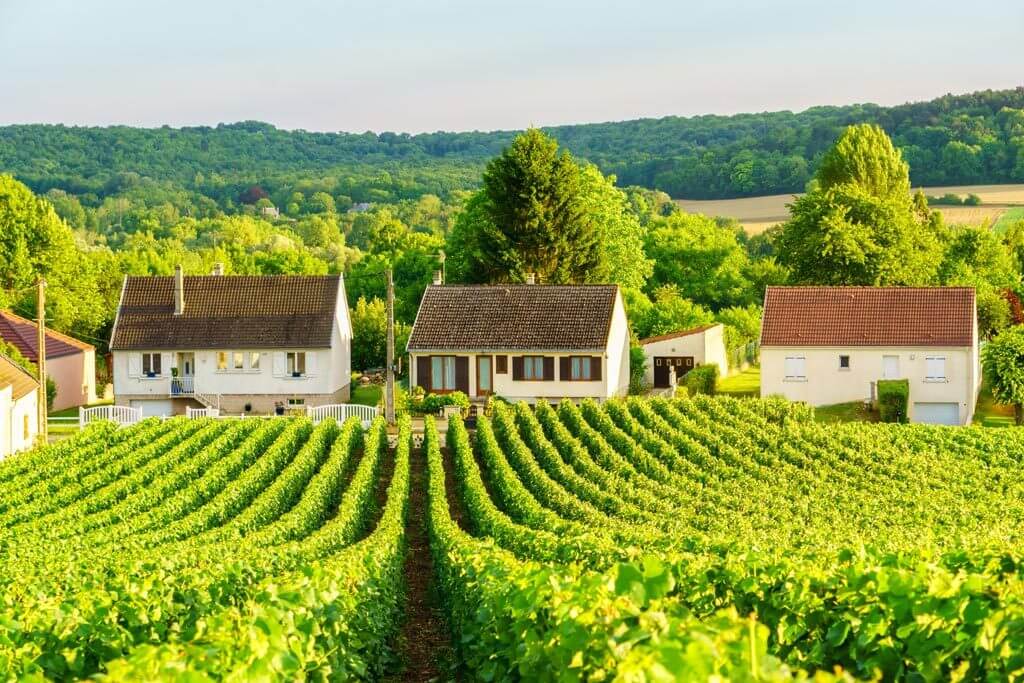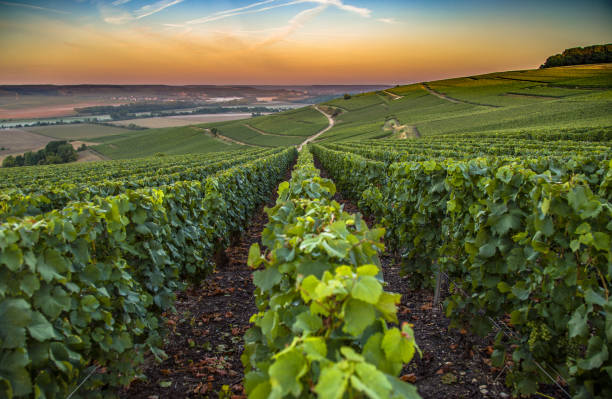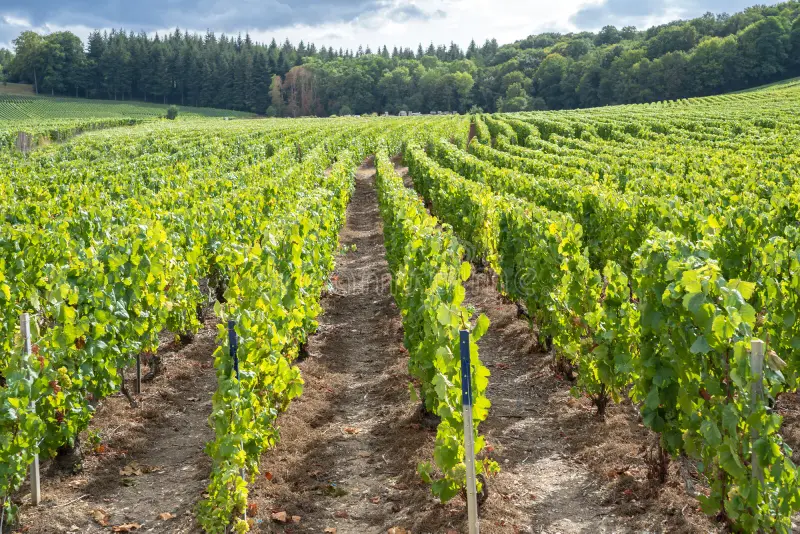Pink Chardonnay: A Forgotten Grape Regaining Its Place in Champagne’s Heritage.
Breaking news from the Vineyards! In the evolving story of Champagne, where tradition and innovation constantly collide, a long-forgotten grape variety is finding its voice again. Pink Chardonnay, a natural mutation of the iconic Chardonnay, has just been officially recognized in the Champagne appellation specifications, becoming the eighth grape variety permitted in Champagne. This development is more than a niche curiosity: it marks a meaningful step in preserving genetic heritage, embracing climate resilience, and enriching the narrative of one of the world’s most storied wine regions.

A Rediscovered Heritage: The Origins of Pink Chardonnay
Pink Chardonnay is not a newly created hybrid or a marketing invention. It is a natural mutation of white Chardonnay that was identified as early as the 1900s in Champagne and Burgundy. For decades, it lingered on the edges of historical records, sometimes confined to collections or a handful of scattered vines. The mutation manifests as a subtle pink hue in the skin, a visual cue that the grape carries a lineage connected to its white sibling.
The revival of Pink Chardonnay owes much to the diligence and passion of dedicated winegrowers who preserved rare selections, replanting clonal material and sharing cuttings through careful propagation. Its eventual inclusion in the French Catalog in 2018 provided a formal botanical identity and created a pathway for propagation beyond private collections. This formal recognition laid the groundwork for its eventual addition to the Champagne specifications.
Official Recognition: A Milestone for Champagne’s Genetic Diversity
This past July, Pink Chardonnay—referred to in official communications as Chardonnay Rosé—was finally included in the Champagne appellation specifications as a main variety. This decision is not merely ceremonial. It acknowledges the grape’s genetic legitimacy and its potential to contribute to the region’s biodiversity, especially in the face of climate challenges that press traditional varieties to adapt or risk diminishing quality and yield stability.
Champagne’s decision to formally include Pink Chardonnay alongside the historic trio of Pinot Noir, Meunier, and Chardonnay Blanc is emblematic of a broader trend in European wine regions: recognizing and valorizing minor or “heritage” varieties that can offer unique profiles, resilience, and cultural resonance. In Champagne, where climate fluctuations increasingly stress viticulture, a broader genetic palette can translate into greater resilience and continued vitality for growers and houses alike.
A Symbol of Intelligent Adaptation
One of the most compelling aspects of Pink Chardonnay’s inclusion is what it represents about viticultural strategy in a warming world. It is important to distinguish Pink Chardonnay from varieties born of deliberate hybridization. Hybridization often aims to graft disease resistance, ripening timing, or other agronomic traits onto a new genetic package. Pink Chardonnay, by contrast, is a natural mutation—a quirk of the grape’s own evolutionary path.
Its existence and adoption illustrate the vineyard’s ability to evolve intelligently: leveraging natural diversity within established grape families to respond to climate pressures without sacrificing the sensory and historical continuity that define Champagne. In other words, Pink Chardonnay embodies a thoughtful reconciliation of heritage and practicality.

Champagne region in France. A beautiful view during the sunrise.
Many may ask, What Pink Chardonnay Brings to the Glass. First, let’s take a look at similarities to White Chardonnay. Agronomically and enologically, Pink Chardonnay is very close to white Chardonnay. Growers report that its ripening patterns, acidity balance, and phenolic development align closely with Chardonnay Blanc. In the winery, the grape’s skin and pigment variation can impart a subtle tint and a distinctive mouthfeel, but the fundamental DNA of the grape remains Chardonnay.
Flavor and Style potential
Freshness and vibrancy: The mutation tends to preserve the classic Chardonnay freshness that Champagne is known for, often with a slightly brighter acidity profile.
Pink Chardonnay can be used in still expressions, as well as in sparkling cuvées. In blanc de blancs or rosé-based blends, it offers a palette that sits between the crisp profile of Chardonnay and the delicate coloration that rosé variants can introduce. The exact stylistic outcome will depend on vineyard site, clone selection, and winemaking approach, but the grape’s lineage suggests it will harmonize well with the region’s established Chardonnay framework.
Champagne has long been defined by a triad—Pinot Noir, Meunier, and Chardonnay Blanc—accounting for the vast majority of plantings. The “minority” grape varieties—Arbane, Petit Meslier, Pinot Blanc, and Pinot Gris—have historically occupied a smaller footprint, collectively representing a tiny fraction of the vineyards. The recent addition of Chardonnay Rosé expands this concept of genetic diversity for Champagne, underscoring a forward-looking commitment to plant heritage and adaptive potential.
For Growers, it means expanded planting options: Pink Chardonnay offers an additional genetic resource that can respond to site-specific conditions. Clonal material and propagation: With formal recognition, nurseries and growers can legally propagate pink Chardonnay, facilitating distribution and long-term vineyard planning.
For the Champagne Houses, Blend creativity: The grape provides more leeway for creative cuvées, potentially enabling new rosé expressions within the Champagne style. Consistency and traceability: Official status helps ensure standardized viticultural practices and supply reliability across the appellation.

For Us, the consumers , it brings more Biodiversity storytelling: The wine will carry a story of genetic heritage and climate adaptation, adding depth to the consumer experience. – As production expands, consumers may encounter new expressions within Champagne that highlight the pink mutation’s unique character.
The Comité Champagne is very important to the production of Champagne. The Comité Champagne is the interprofessional organization that represents both winegrowers and Champagne houses. It plays a central role in shaping regulatory standards, promoting cooperation, and safeguarding the appellation’s interests. The organization represents more than 16,000 winegrowers and 350 Champagne houses, and it works to balance the needs of diverse stakeholders within the Champagne ecosystem.
This is not a new idea by any means. In the Early 1900s, Pink Chardonnay was identified in Champagne and Burgundy as a natural mutation of Chardonnay. In 2018: Inclusion in the French Catalog, granting botanical identity and propagation rights. More recently, in 2025 the Official recognition of Chardonnay Rosé as a main variety in the Champagne appellation specifications.
Champagne’s embrace of Pink Chardonnay reflects a broader philosophy: honor the past while preparing for the future. By validating a natural mutation that speaks to the region’s history and its capacity to adapt, the Champagne community reinforces its leadership in biodiversity, climate resilience, and culinary storytelling. As growers plant new vines, winemakers craft novel cuvées, and consumers discover fresh expressions of a familiar grape, Pink Chardonnay stands as a quiet testament to the idea that heritage and innovation can coexist harmoniously in one of the world’s most celebrated wine regions.



